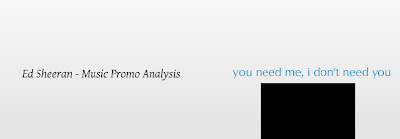REM's music video '
bad day' is unique in style. The music video has taken on the look of a weather report in different areas of people's lives, this is a great way of showing intertextuality because the layout of the music video is similar to the way news programmes look like (for example sky). This music video fits in with
John Stewart's theory. Throughout the music video there is no initial performance from the guitarists and drummer however they are all miming the lyrics to the song.
The screen shot above shows a mid shot of the lead singer of REM, Michael Stipe, dressed as a news reporter and also talking/singing towards the camera lens (Direct mode of address)
Split screen effect, similar effect to what you would see on a news channel if someone was feedbacking to the studio. As we can see from the headlines at the bottom on the screen, all the news is about bad weather, linking back to the song title 'bad day'. Both shots are mid again, this shot carries on nearly all the way throughout the music video.
Like the previous screen shot this is showing you news reporters else where. However, below the news reporter, the lyrics of the song are typed up. This is a good effect because you'd see this on news channels, also these lyrics are questions so in a way they are involving the audience as well.
This weather report is what you would also associate with a typical news channel. I believe that this shot fits in with the lyrics because it is demonstrating a cloudy and high pressured windy day, which links into the bad day thoughts and also having the band member do movements like a weather reporter, makes it more realistic. This shot links with John Stewart's theory as it is linking to real life.
'Count your blessings'. These are the lyrics mimed by this band member shown above. A close up is extremely effective because it is showing emotions. This shot is also taken out of a helicopter (not a real - green screened). Once again we can see writing on the screen at the bottom, resembling news channels this way. Having bold red writing means something dramatic is happening (danger usually). Linking this back to the lyrics i picked out the red writing makes it serious and making people believe that it's a bad day and count the good times you've had to way out the bad.

End shots of the news reporter (in this case the band members) is very ideological, even though the end credits of normal news channels may not end this way, showing a clip of them is normally shown. So this is also linking back. Mid shots of each reporter is effective and draws the attention of the audience, making this a repeatable music video because the audience would re-watch to see what the band members do at the end.











































